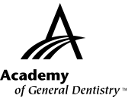|
Exercise No. 390
Subject Code: 492
Soft Tissue Surgery
The 15 questions for this exercise are based on the article Do we need keratinized mucosa for a healthy peri-implant soft tissue? on pages 51-55. This exercise was developed by Robert Alexander Busto, DMD, MBA, FAGD, in association with the General Dentistry Self-Instruction committee.
|
Reading the article and successfully completing the exercise will enable you to:
- review indicators of peri-implant soft tissue health;
- understand the role of keratinized mucosa (KM) in peri-implant soft tissue health; and
- develop a clinical decision matrix for the treatment of peri-implant soft tissues.
|

